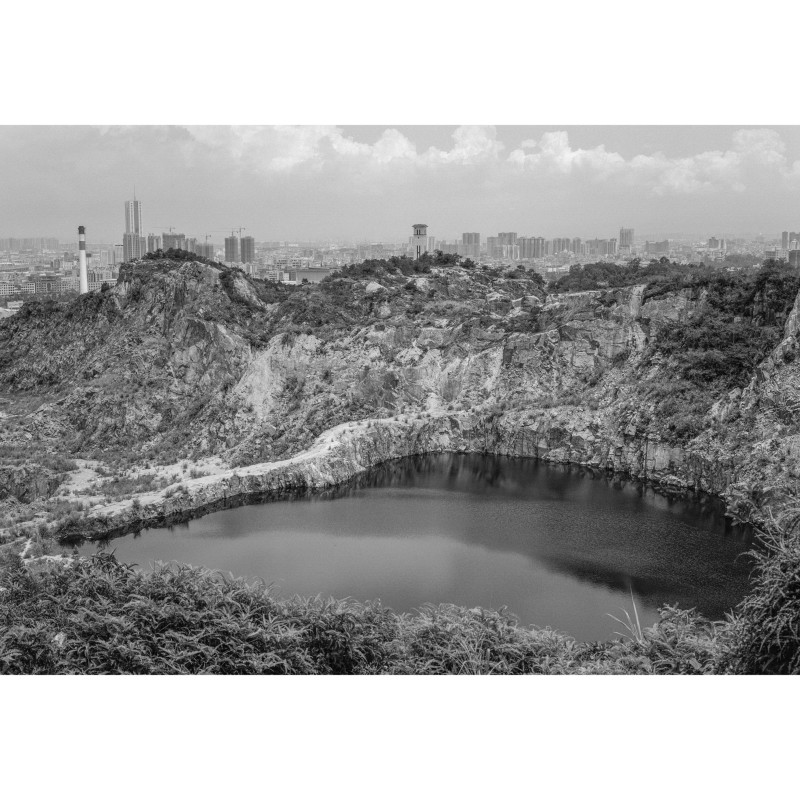The Chinese title of this exhibition, which literally means “the self directs while the other performs”, can be seen as a visual pun. The self that directs refers to Wei Haoliang behind the camera and the other that performs represents a variety of people who play the role of urban invaders. The latter also represents Wei's change of perspective when he subsumes himself in the eyes of the other in the process of photographing them.
Shape of Life features fragments of images documented by Wei on a daily basis. These fragments mostly linger at the periphery of our vision, such as condensed gas, reflected light, and elongated shadows under the sun. The black and white images highlight the texture and the touch of those fragments, through which Wei tries to reinterpret their alternative values and meanings.
Wasteland captures the landscape of Dongguan, the city where he lives, revealing the inner conflict of this world factory. Wei’s account of the city is not entirely objective but carries with it an empathy for what he sees. Whether it is landscape, factory, port or abandoned space, these seemingly tranquil images lurk in the undercurrents of reality. He gazes at the city at every moment, seeking a delicate sense of equilibrium between the internal and the external in this rapidly urbanizing and unbalanced world.
Ten Days of Whispers is Wei’s latest residency project, based on the perspective of "Street Observations"1. This series of work focuses on a year-round group phenomenon on the Bund in Shanghai--the elderly tour group--and opens the narrative with a witty and humorous approach. By bringing in his past experience of city life and photography from Wasteland, he naturally creates a sense of detachment and therefore inherits a perspective of the other when observing the city. From this perspective, the Oriental Pearl Tower and many other buildings are transformed into shapes and light sources, forming symbols with playful and visual elements, thus softening the sense of confusion and unease when "invading" the city.2
Wei's works are mostly intuitive, with a fresh point of view of a young photographer. Starting from his individual urban experience, he displays the marginal space of the city, while unfolding a unique visual spectacle and a sense of our time. In the oscillation between the self and the object, he presents the flow of life in the world of the spectacle.
Notes:
1、Street Observations: "Introduction to Street Observations", edited and published by Genpei Akasegawa and others in 1986, suggests that "street observation" is a scientific approach to defining the observation of daily urban life on the street.
2、Interview with Wei Haoliang
Artist Biography
Wei Haoliang, born in 1995, is a native of Meizhou, Guangdong, and now lives in Dongguan. He graduated from the Photography Department of Guangzhou Academy of Fine Arts in 2020 with a master's degree; he studied at the Photography Department of the Royal Academy of Fine Arts in Antwerp, Belgium, from 2018 to 2019. His works are grounded in the inner world, emphasizing its interaction with the external world in practice while exploring the relationship among people, nature, and the city from a first-person point of view. He creates in the forms of photography, video, and handmade books.
Personal website: www.weihaoliang.com
